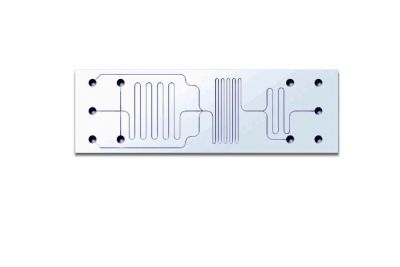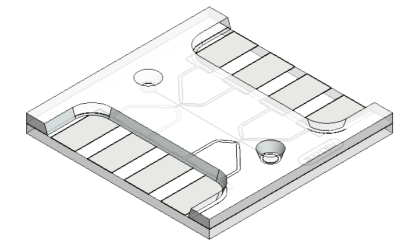Electrical impedance spectroscopy chips
Microfluidic and Electrical Impedance spectroscopy combined with Microfluidics is a powerful measurement technique that can be a good alternative to visual characterization and visual counting of cells. Microfluidics will arrange transportation of a medium with cells or particles to let them pass-by a set of electrodes. When they pass-by the electrodes this gives a change in electrical signal, and such allows counting. However more details of the cell’s can be detected due to impedance difference and can support differentiation....
Read More
Microfluidic and Electrical Impedance spectroscopy combined with Microfluidics is a powerful measurement technique that can be a good alternative to visual characterization and visual counting of cells. Microfluidics will arrange transportation of a medium with cells or particles to let them pass-by a set of electrodes. When they pass-by the electrodes this gives a change in electrical signal, and such allows counting. However more details of the cell’s can be detected due to impedance difference and can support differentiation.
The base of Impedance based measurements is that different cell or particles respond differently to an applied AC signal (sinus) and the observed signal difference is strongly frequency dependent. Difference can be for instance be by cell or particle volume differences, but especially for cell’s there can be more substantial differences due to cell physiology.
When detection is combined with active cell sorting it can be a strong base for flow cytometry. Active cell sorting can be done in microfluidics in a lot of different ways:
- Dielectrophoresis
- Acoustophoresis
- Magnetophoresis
It’s also possible to combine with droplet generation to encapsulate cells in droplets. Such droplet helps to distinguish individual cell’s but can also create a mini environment for each cell like a cocoon. In such a mini-cocoon cells can individually react with specific reagents.


